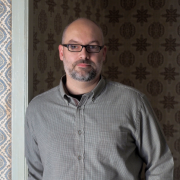
Recovering our memory is one of the elements upon which to build a people’s identity and to give it democratic and representative might, giving back a voice to those whom it was stolen from.
2018 is the European Year of Cultural Heritage, a commemoration that was adopted by the Council of Europe on 17 May 2017 with the aim of “raising awareness in society on the European history and values, strengthening a common sense of identity and value the possibilities that our cultural heritage has to offer for the development of society”. The first consideration that European institutions have built their arguments states that “the ideals, principles and values that are intrinsic to the cultural heritage of Europe constitute a common source of memory, identity, dialogue, cohesion and creativity”.
“He who loses his origins, loses also his identity”, say the verses sung by the songwriter of Xàtiva, Raimon since 1975 in the song “I come from silence”. Recovering our memory is one of the elements upon which to build a people’s identity and to give it democratic and representative might, giving back a voice to those whom it was stolen from. That is why memory, perhaps to avoid tripping over the same stone, has always been the cornerstone of the European history. With all the wars and other acts of barbarity that have wrecked Europe throughout history, it is no wonder that Europe’s consolidated and intelligent society still feels cyclically called upon to be accountable and face up to its darkest past, hidden away on purpose.
The most usual way to recover historical memory has been through organizing commemorative events, paying tribute and the building of monuments. The World War I and II memorials erected in France, or the Holocaust monument in Berlin, have made justice for this past for many years, just to give a couple of examples.
A brilliant initiative that is worth remembering is the Stolpersteine (A German word in plural meaning “stones to stumble” on memory). These are small monuments to remember the victims of Nazism, created in 1992 by the German artist Gunter Demnig. An object of personal creativity that has reached more than 1,800 cities and currently has 60,000 units distributed across 11 European countries.
In the Spanish State, the long and dark arms of the dictatorship deactivated any and all governmental action, and it was civil society that took the initiative. Organizations to honour memory such as Amical Mathausen (an association that was created clandestinely in 1962), the Association to Honour those who gave their life for the freedom of Catalonia (1977), the Association for the Recovery of Historic Memory in Catalonia (2002) or the Amical de Ravensbrück (2005) have fought to keep alive the memory of the Catalan victims of Franco’s dictatorship and Nazism.
Memory is an important heritage asset that helps building identities, strengthens communities and promotes the development of society. Along these lines, another way to recover and explain memory is through cultural tourism and teaching heritage. A way where archives, libraries and museums build on new experiences such as historical recreations, the living history recreated at the same spots where the events really took place.
Historical re-enactment is an activity that exists everywhere in this world. In 1998, at the re-enactment of the Gettysburg battle (United States of America) to mark the 135th anniversary, there were 15,000 to 20,000 re-enactors participating and 50,000 attended. In 2015, the re-enactment of the battle of Waterloo (Belgium) to commemorate its 200th anniversary, 6,200 re-enactors took part; 330 horses and 120 canons. Beside the re-enactment of strictly battles, it is also worth recalling the reconstruction of the medieval chateau of Guédelon (France), initiated in 1997 using medieval techniques and materials. Described as an open-air museum, in 2015 it was visited by more than 300,000 people.
These activities help us to understand, learn from and experience first-hand some of the events that marked our history, and to give a renewed value to our memory.



Add new comment